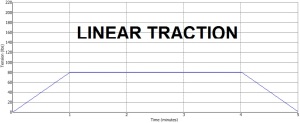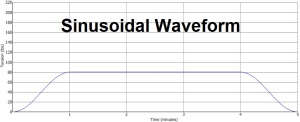
This article examines the physics and mechanics of how IDD Therapy Spinal Decompression is able to distract and mobilise specfic segments of the spine and thus decompress a targeted intervertebral disc.
Traditional traction has been outmoded for a number of years and one of the shortcomings of traction was the inability to focus and control forces at specifc spinal levels.
The four goals of IDD Therapy spinal decompression are to:
- Release pressure on nerves
- Improve Disc Health
- Re-educate soft tissues
- Re-align spinal structures
IDD Therapy treatment is applied by distracting and mobilising targeted spinal segments at precisely measured angles, using high distraction forces which incorporate joint mobilisation in a longitudinal plane.
Controlled forces are high enough to comfortably stretch the paraspinal tissues, open and create pressure differentials in the disc space and are applied for sufficient time to have a therapeutic effect.
Ergonomic pelvic and thoracic harnesses secure the patient to the bed and a computer controlled cyclic distraction force is applied. Treatment is delivered by CE & FDA cleared Class II SPINA devices. All aspects of treatment and outcomes are recorded as part of a commitment to evidence-based medicine.
Decompression of a Targeted Spinal Segment.
In order to decompress a targeted level, engineers applied the principles of vector forces from physics to the spine. They observed that by focussing a controlled distraction force at a specific angle, they could open targeted spinal segments by between 5mm -7mm1.
 As the angle which a pulling force makes with the horizontal increases, the component of force in the horizontal direction (Fx) decreases and the vertical component of force (Fy) increases.
As the angle which a pulling force makes with the horizontal increases, the component of force in the horizontal direction (Fx) decreases and the vertical component of force (Fy) increases.
This causes the relative direction of the pulling force to change and therefore the focus point of application of the pulling force to move progressively along the x-axis.
Measured changes in the angle of applied pulling force enable clinicians to focus and direct distraction forces accurately to injured spinal segments.
Sinusoidal distraction force: This patented waveform replaces linear pulling forces allowing greater comfort and application of higher distraction forces of up to half body weight plus 5-10kgs.
Longer treatment duration: Twenty-five minute treatment during which time joints are distracted for 13 times to a high tension, whilst soft tissues are worked and remain under constant tension.
Joint Mobilisation: The sinusoidal waveform allows for the application of oscillatory forces to mobilise the joint in a longitudinal, rather than anterior-posterior plane at the point when the joint is distracted.

Low frequency Mid Frequency High Frequency Low Amplitude High Amplitude
The sum of the parts: Improved harnessing secures the pelvis, measured angle of distraction, computer controlled sinusoidal waveform, cyclical distraction and patient remains completely relaxed for 25 minutes.
SUMMARY
In order to decompress (take pressure off) a joint, it is necessary to distract it in the opposite direction to the compressive force. Where a joint has become stiff and immobile, gentle mobilisation at the point of distraction helps to improve mobility in the joint and allow the natural mechanisms which keep joints healthy to operate freely.
IDD Therapy Spinal Decompression applies new technology to physical laws to enable clinicians to distract and mobilise targeted spinal segments as part of a complete programme of care, including manual therapy and exercise rehabilitation.
Author: Stephen Small www.steadfastclinics.co.uk
1 Shealy N, Leroy P: New Concepts in Back Pain Management. AJPM (1) 20:239241 1998
[contact-form-7 404 "Not Found"]




